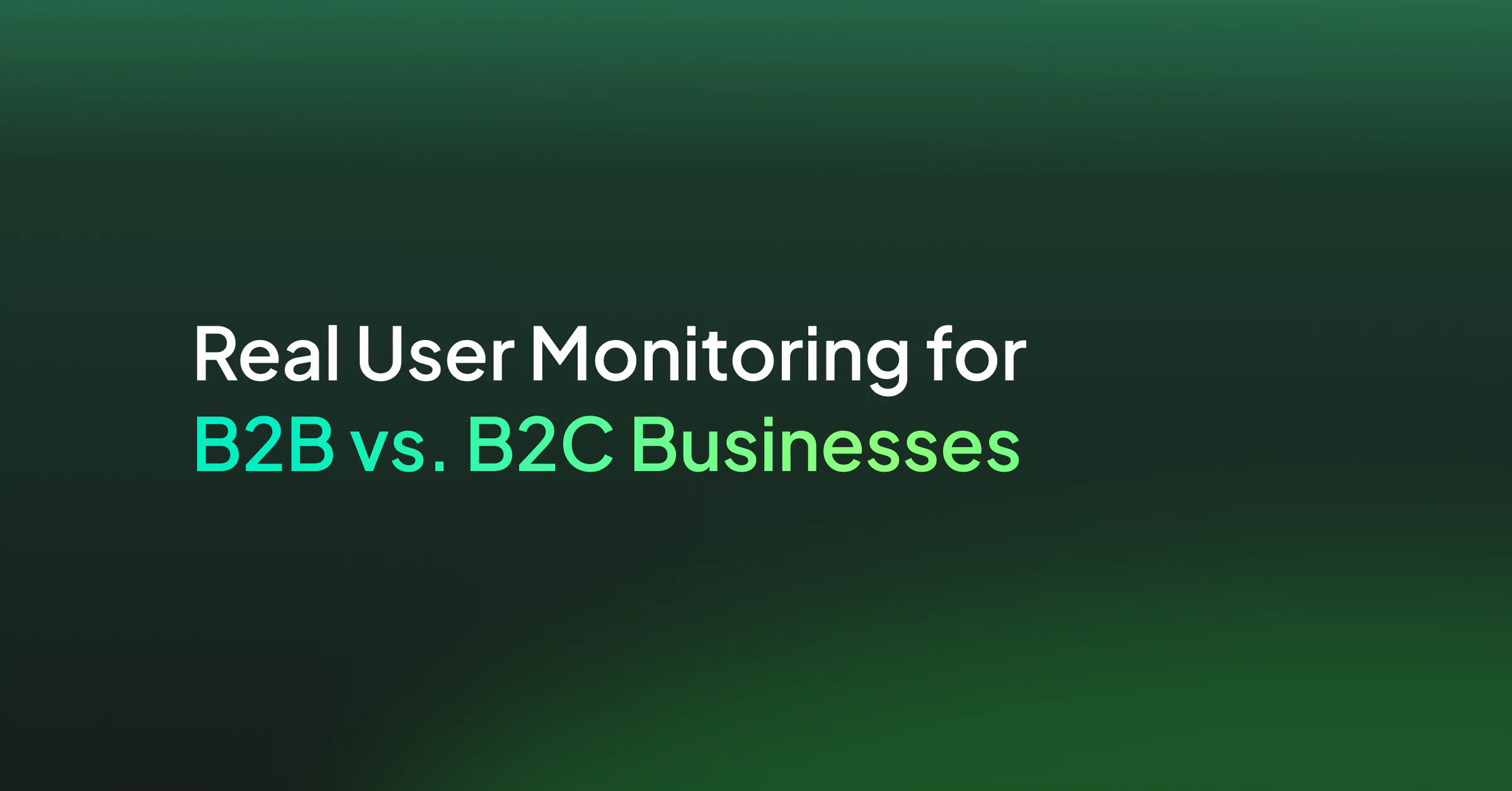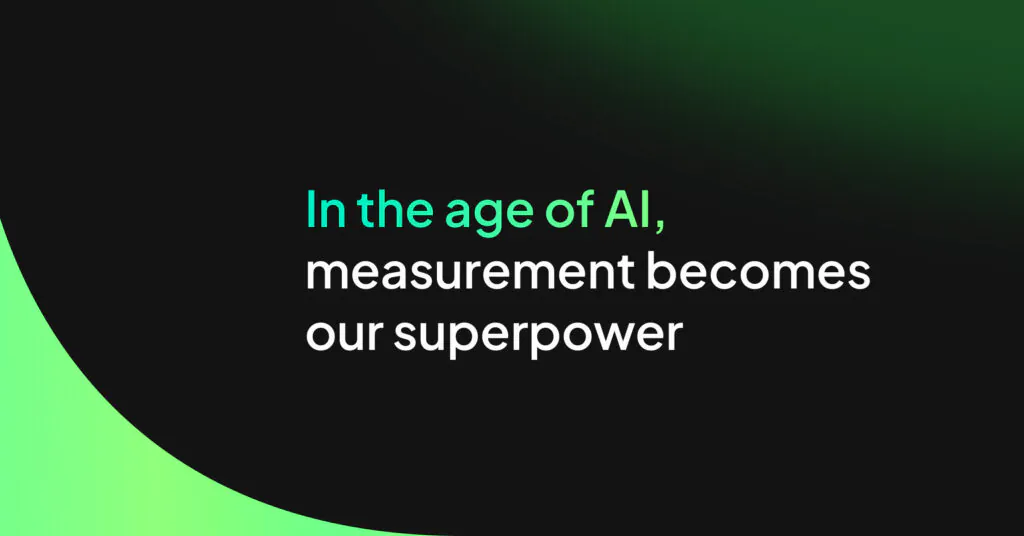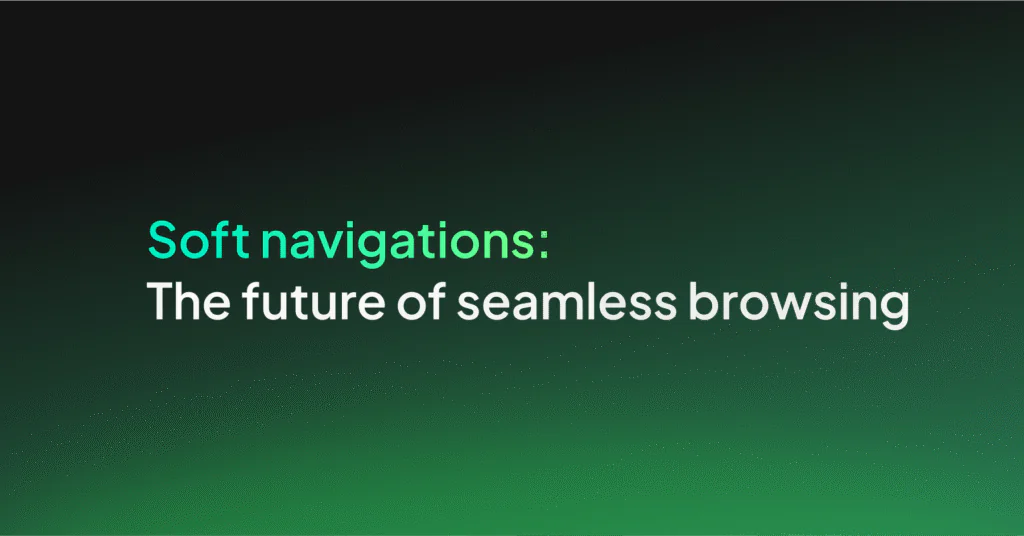Real User Monitoring for B2B vs. B2C Businesses

Imagine you’re a product manager at a B2B SaaS company. Monday morning, a frustrated client floods your inbox—their workflows were disrupted by a slowdown you could’ve caught sooner with better user insights.
Now, imagine running an e-commerce store on Cyber Monday. Traffic surges, but abandoned carts spike. Your RUM dashboard reveals slow mobile checkouts. A quick fix saves thousands in sales.
These scenarios highlight the importance of RUM, but they also illustrate how its application differs for B2B and B2C businesses. While both aim to improve user experiences, the way they approach monitoring is shaped by their unique goals, user journeys, and challenges.
Key Differences in B2B vs. B2C User Journeys
B2B: Complex, Collaborative, and Long-Term
In B2B environments, user journeys are intricate and often involve multiple stakeholders. Reliability and efficiency are paramount, as disruptions can have ripple effects on business operations. When a problem arises, a typical process might involve opening a support ticket, notifying the internal system owner, and waiting for the issue to be addressed. This can leave users enduring bad experiences without immediate resolution. While the risk of immediate churn is lower, unresolved issues can erode long-term trust and satisfaction.
B2C: Fast, Simple, and Emotion-Driven
In contrast, B2C businesses prioritize speed, simplicity, and emotional engagement. Users expect seamless interactions—whether it’s browsing a product catalog or completing a purchase. A frustrating experience, such as slow load times or a buggy interface, can quickly lead to abandonment. Unlike B2B users, B2C customers have more alternatives and fewer barriers to switching, making user experience (UX) a critical differentiator.
Tailoring RUM Strategies
For B2B:
B2B businesses should focus on long-term performance and reliability. Key strategies include:
- Monitoring complex workflows and integrations using full-stack correlation features to identify how frontend errors propagate across services
- Tracking user patterns during onboarding to ensure seamless adoption
- Using error consolidation to reduce noise and identify recurring issues over time
For B2C:
B2C businesses should prioritize real-time insights and rapid response. This involves:
- Leveraging Session Replay to identify and reproduce user issues
- Proactively monitoring user journeys—from search to checkout—during high-demand events, providing real-time signals and key metrics to resolve digital experience issues before they impact revenue
- Focusing on device-specific performance using granular performance metrics
- Ensuring fast, smooth experiences by monitoring Core Web Vitals like Largest Contentful Paint ( LCP) and Cumulative Layout Shift (CLS)—so users don’t wait for pages to load or deal with frustrating visual shifts
Real-World Examples
B2B in Action:
A B2B SaaS platform for task management faced a critical issue after a recent release—users struggled to load their task data due to a buggy deployment. The team needed to pinpoint the root cause fast to prevent an outage and maintain SLAs.
Using Real User Monitoring (RUM), they queried affected User Sessions, grouping by application version to confirm the issue was release-related. Then, leveraging Error Templating, they identified recurring errors impacting multiple users, consolidating noise into actionable insights.
With real-time visibility, the team resolved the bug before users reported it, minimizing disruption and ensuring seamless workflows. By integrating error tracking and session analysis, they reduced troubleshooting time and strengthened product reliability—demonstrating the power of proactive monitoring in maintaining a seamless user experience.
B2C in Action:
A global ecommerce retailer noticed a 15% spike in cart abandonment rates during their annual flash sale. Using Session Replay, they discovered that checkout pages were taking over three seconds to load on mobile devices, with Core Web Vitals metrics revealing high Cumulative Layout Shift (CLS) and poor Largest Contentful Paint (LCP).
The retailer’s technical team optimized image compression and implemented lazy loading for below-the-fold elements, reducing LCP by 1.2 seconds. They also adjusted CSS to stabilize the layout, bringing CLS within acceptable thresholds. Post-optimization, cart abandonment dropped by 22%, leading to a $2.5 million revenue recovery during the sale. Real-time monitoring allowed them to identify and resolve the issue before it affected more customers.
Choosing the Right RUM Solution
When selecting a RUM tool, it’s important to align its capabilities with your business model:
For B2B:
- Prioritize tools that provide insights into long-term performance and reliability, like the ability to query from remote
- Ensure support for monitoring complex integrations and workflows
- Use full-stack correlation features to trace issues across frontend and backend systems
For B2C:
- Focus on speed and scalability to handle high-traffic events.
- Choose tools offering granular insights into user sessions and geographic performance
- Prioritize real-time dashboards for immediate issue resolution
- Leverage Session Replay for immediate issue reproduction and resolution
Conclusion
Real User Monitoring is not a one-size-fits-all solution. Whether you’re a B2B SaaS platform ensuring seamless workflows for clients or a B2C retailer delivering lightning-fast shopping experiences, RUM can be tailored to meet your needs. The key is understanding your users, aligning metrics with your business goals, and acting quickly on the insights you gather.
Ready to take your user experience to the next level? Start monitoring with a solution designed for your business today. Learn more about Coralogix RUM here.




